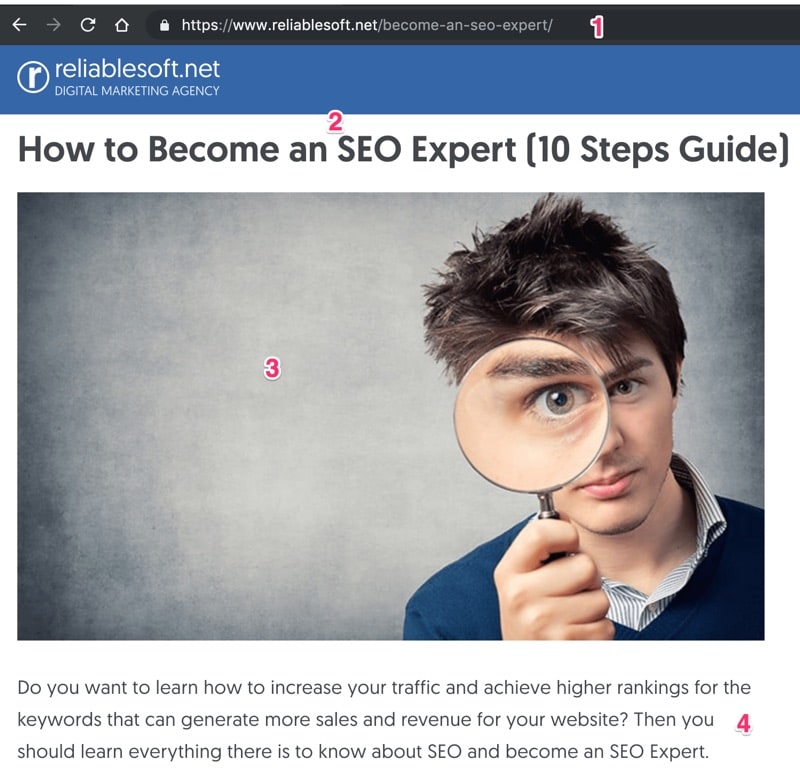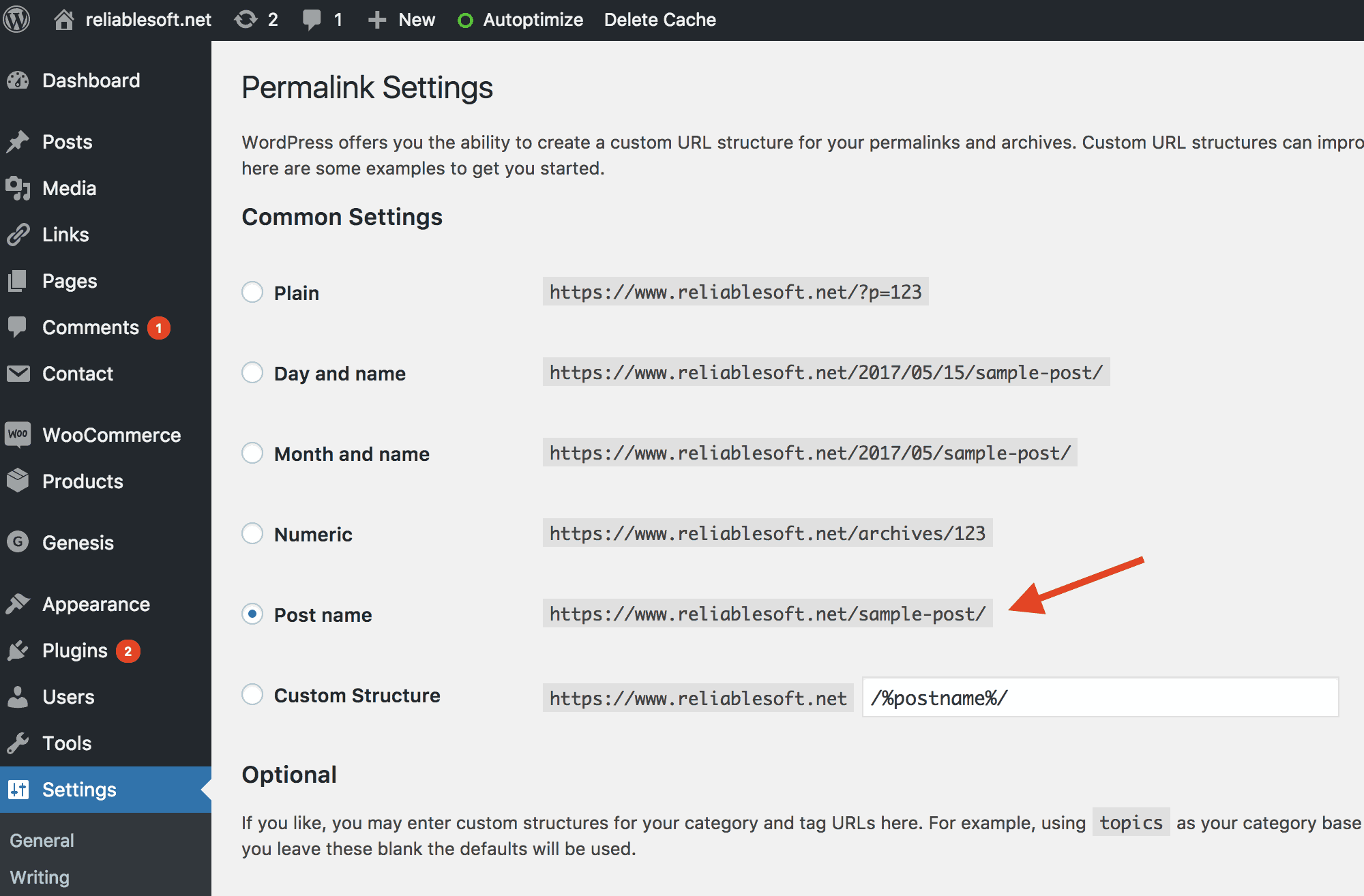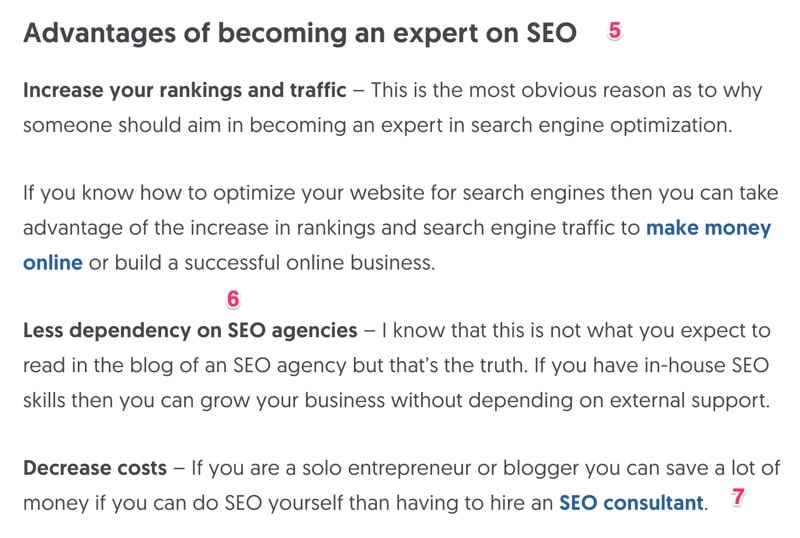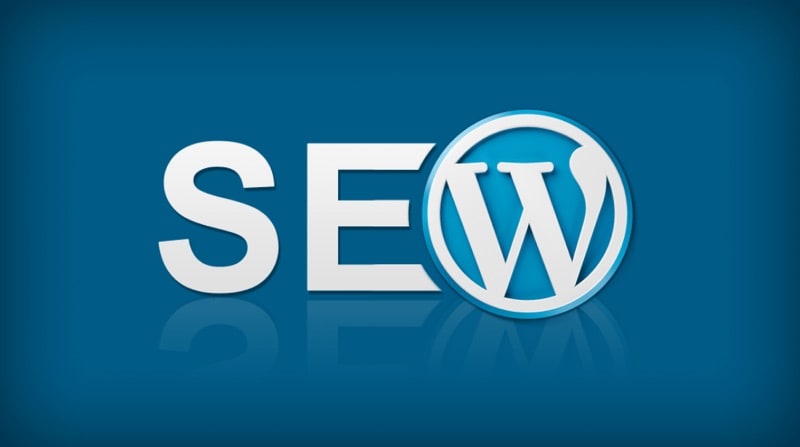In this post, you will learn everything you need to know about WordPress On-Page SEO.
I will first explain what is the difference between a WordPress post and page (from an SEO perspective) and give you a checklist on how to optimize both using industry best standards and practices.
What is the difference between a WordPress Post and Page?
A default WordPress installation comes with two content types, posts, and pages. Both do the same thing i.e. they allow you to add a title and publish content, but they also have certain differences.
In a nutshell:
Pages are mostly used for the static content of a website and are not part of WordPress’s blog content loop.
In other words, if you add a new page on your website it will not appear on your main blog page or in your latest posts widget.
Pages by default do not have the option to be added to categories.
Pages are mostly used for the ‘about us’, ‘contact us’, and any other pages of the website that are not posts i.e. landing pages.
Pages can be based on different templates (meaning they can have a different design), while posts are all based on the same template so they have the same design and structure.
Related Reading: 10 Actionable Tips for SEO Optimized Blog Posts and Landing Page SEO.
What about SEO?
SEO wise there is no difference. A page or post can rank high in the SERPS if it has the right content and is optimized properly.
Some people argue that pages have an advantage but taking a closer look at the top results in Google proves otherwise.
What is the best practice, should you use posts or pages?
The simpler approach is always better. Use posts for your blog (articles, news, announcements, product reviews, etc.) and pages for all your static content.
How to On-Page SEO WordPress Pages
WordPress is a great SEO friendly platform but for better search engine visibility you need to SEO optimize each and every page you publish online.
Before doing SEO for your posts or pages, you should review and make sure that your homepage is optimized.
This is important especially for corporate websites or eCommerce stores since the home page can give a lot of information to search engines about the website and its purpose.
This also has an impact on the SEO performance of the other pages on your website.
So, once you get homepage SEO correct, you can proceed with optimizing your WordPress pages.
There are a number of elements that need attention and I will demonstrate this using one of my posts (How to Become an SEO Expert) as an example.

Let’s get started.
1. URL Optimization
The first thing that you need to check is that WordPress is set up to use SEO friendly URLs.
An SEO friendly URL has the following characteristics:
- It is meaningful and describes what a page or post is about
- It has ‘-’ to separate each and every word that makes up the URL
- It doesn’t include unnecessary characters and it’s not too lengthy (the limit for a URL is more than 2000 characters but for SEO purposes the shorter, the better)
Here are a few examples of good and bad formatted URLs.
Good
- https://www.reliablesoft.net/what-is-seo
- http://www.reliablesoft.net/wordpress-seo-for-beginners-108
- http://reliablesoft.net/seo/how-to-make-money-online-with-wordpress
Bad
- https://www.reliablesoft.net/what_is_seo
- http://www.reliablesoft.net/sessionid=123&var=1&content=SEO
- http://www.amazon.co.uk/dp/B00KDRUCJY/ref=pf_rd_s=desktop-hero-kindle-A&pf_rd_r=13N79C0V01QC2&pf_rd_t=36
WordPress has a number of options for configuring your URLs (also called Slugs) and you can find these under SETTINGS.

As you can see in the screenshot above, there are a number of pre-defined settings you can choose but you can also select ‘custom structure’ and define your own URL structure.
What is the best permalink setting for SEO purposes?
Having directly the URL after the domain name is the best option.
You don’t have to provide any unnecessary information that will make the job of search engine crawlers difficult.
Should you use dates in the URL?
No.
In the past there was a discussion in the SEO industry as to whether you should use dates in your URLs i.e. https://www.reliablesoft.net/2016/01/post-title in order to help search engines identify new content but this is not needed.
There are many other ways to define the date a post or page is published (sitemaps, RSS feeds, schemas) so there is no particular reason for overloading your URLs with extra information.
What will happen if I change the permalink settings for an existing WordPress website?
Normally WordPress will handle the changes automatically by adding the necessary code in your .htaccess file so you don’t have to do anything else.
What you can do to test that everything is ok and that your SEO rankings will not be affected is to open a browser window and type in your old URL.
If the page redirects to the new URL then everything is ok, if not you may have to check your permissions and come back to the permalink settings page and click the SAVE CHANGES button again.
This will force WordPress to re-write the necessary rules to the .htaccess file.
2. Page Title Optimization
The next item to optimize is the title of a page or post.
Providing for an SEO Friendly title is one of the most important on-page SEO factors of anything that is published online.
Search engines while crawling a page, search the HTML code to find and interpret the <title> tag.
What they find in the title is a strong signal on what the page is about.
Of course, there are many other signals that are part of their ranking algorithms but the title plays a prominent role.
When thinking about your title consider the following:
- The length of a good title is between 45 – 60 characters. The title should not be too short i.e. only a couple of words and also not over 60 characters since search engines show about 60 characters in the SERPS.
- The title should be catchy and promising. This is what users will see in the search results and if the title is not interesting they won’t click even if your page appears in the top positions.
- The title should accurately describe the page content. In your effort to make your title interesting don’t overdo it by providing for a title that is not backed up by the page content.
- Remember that your goal is to optimize the page for search engines and not just to grab the user’s attention. Consistency in the title and content is necessary for SEO success.
- Add keywords in your title. This is also necessary and important. When writing your title think what keywords are relevant to the page content and what keywords users may type in the search box.
Have in mind that the title of a post (or page) may be different than the H1 tag of a page.
If you take a closer look at the article you are reading now, my page title is “WordPress On-Page SEO Guide (Checklist Included) and my H1 Tag “How to SEO your WordPress Pages”.
The reason is that most people search Google using “SEO On-Page WordPress” so I adjusted my title to be friendlier to Search engine users.
Page Title Optimization Example
A very good example of how to approach your title optimization is given by Google AdSense.

If you closely examine the title used by AdSense on their homepage, you will notice that the first 50 characters of the title don’t mention the brand i.e. ‘Google’ or ‘AdSense’ but it includes several keywords like ‘make money online’ and ‘website monetization’.
3. Media Elements SEO
Having images, screenshots, videos, and other media elements makes a page more interesting and easier to read.
Things to consider:
- Too many media elements increase the loading time of a website and this is not good especially for mobile users.
- If you have videos, then upload them in a streaming video service like YouTube or Amazon WES and embed them on your website. Hosting the videos on your own server is not a good idea.
- Use ALT Text for images and the proper schemas for Videos.
4. Page introduction Optimization
The content found at the top of any page is important for SEO.
Google always assumes that the most useful parts of a page are closer to the top.
To take advantage of this make sure that:
- You have text content as close as possible to the top of the page.
- The first couple of lines should accurately describe the page.
- Include keywords that are consistent with the page title.
Think of this as a summary of the page and a way to tell search engines (and users) in a few words what the page is about.
You can use the first 150 characters of your introduction as the meta description tag of the page as well.

5. Optimize Your Subheadings (H2, H3)
It is proven that long blog posts (over 1500 words) perform better in SEO.
On the other hand, this means that pages become longer and more difficult to read.
To keep your readers interested you should try and break down your content into sections and use subheadings to describe each section.
Subheadings are good for SEO and also useful for people who use skimming when reading.
Approach the structure of your page in the same way you would approach the setup of a ‘table of contents’ for a book.
The page titles are your book chapters and the subheadings of a page are the chapter contents.
In terms of technical SEO, the page title should have the <H1> tag (and you should only have one H1 per page) and the subheadings can be <H2> or <H3>.
6. Content formatting
Besides subheadings, make use of other formatting options to make your pages more appealing to the eye.
Things like bold text, italics, and small paragraphs help in beautifying a page.
Many people think that this is not very important because search engine crawlers cannot really ‘see’ a page like a human but this is wrong.
Crawlers are able to tell if formatting work has been done on the page but most important of all, don’t forget that the user experience is what matters most and this is where you should concentrate all your efforts.
Make your users happy so that they spend more time on your page, engage with your content, and come back for more.
7. Make use of internal links
One of the most powerful tools you have at your disposal when optimizing a page for SEO is internal linking.
Internal links are simply links pointing to pages (or posts) in the same domain.
They serve four major purposes:
- First, they give users an easy way to read more about a certain topic.
- Second, they act as pointers to search engines so that they crawl and discover more pages from your website.
- Third, the anchor text of the internal links is used by search engines as a ‘guide’ on what the linking page is about.
- Fourth, it’s a great way to make search engines differentiate the important pages of your website from the rest. This is useful in cases you want to improve the ranking of a page for specific keywords.
Best practices when using internal links
- Use internal links only when they are useful for users. Don’t just add internal links for the sake of having links to a page.
- Don’t be afraid to have keywords in your anchor text for internal links. Google will not penalize you.
- Vary the anchor text. While as mentioned above it is ok to use optimized anchor text for your links, don’t overdo it but try to vary the anchor text. As a general rule of thumb, over-optimization is never good.
- Don’t just link to old posts from new posts but try to go back and edit older posts and add links to newer posts.
8. Content SEO
So far in the process, I have described the technical SEO aspects of optimizing a page or post but this should not in any way reduce the importance of the actual page content.
Make no mistake, the quality of the content is the biggest SEO factor of all.
I have said it many times in the past:
“A website with great content will perform well in search rankings with or without SEO. A website with great content and good SEO will perform great in search.”
What is good content?
In its simplest form, good content is what users want to read.
Search engines have become so intelligent in the way they interpret user behavior and they can identify what users like and what they don’t.
Google’s latest addition to the ranking algorithm (RankBrain), is proof that machines are able to understand and satisfy user intent.
When a user types something in the Google search box, their sophisticated algorithm will return the best possible results to keep that user happy.
From a publisher’s perspective, how can you create content that will make your readers (and search engines) happy?
This is where SEO content comes into play. The most important guidelines are:
Content Uniqueness
Any content you publish on your website has to be unique. Unique means that it’s not an exact copy of something that is already published on-line.
Take for example the post you are reading now if you search Google for “On-Page SEO WordPress”, you will get hundreds of pages that talk about the same topic, yet this post is unique and original.
Content Freshness
People like to read up-to-date content and search engines want to offer their users the latest information about a topic so updating your website frequently with new content is a critical part of SEO.
Content should be long enough to grab the attention of both users and bots
Various studies have shown that long detailed content performs better in search and is also shared more frequently in social media.
Websites that consistently publish long articles (more than 1500 words) have experienced more growth in organic traffic than websites publishing shorter articles.
What is the relationship between content and optimizing your WordPress posts and pages?
Part of the on-page optimization process is to review your page or post content and make sure that has the characteristics specified above i.e. that is unique, fresh, and long enough (depending on the nature of your website).
9. Annotate your content with schemas
Structured data is good for SEO. Schemas can improve the way your website is shown in the search results and this has a number of benefits.
When optimizing your WordPress posts or pages, you need to make sure that the relevant schema is implemented in your pages.
For more details read, What is Schema Markup in SEO.
10. Build high-quality external links
No SEO optimization guide is complete without mentioning the importance of incoming links.
Links pointing to a website or webpage are considered by search engines as ‘votes of trust’ and this works in a positive way when it comes to achieving higher rankings.
Related Reading: What are backlinks
A good link is one that is coming from a related website and is trusted by Google.
This immediately excludes purchased links, links exchanges, links from blog networks, links from article directories, low-quality forums, spam comments, and anything else that does not provide good control on how links are given.
How can you get good links?
It may sound cliché but the only safe way to approach link building is to reach out to people that may be interested in linking to your content.
You can get to them either by targeting them in social media (through paid advertising) or by connecting with them via email.
The general idea is that you need to get your content in front of the people that are likely to naturally link to it.
WordPress On-Page SEO Checklist
Here is your checklist. If you follow this for every page or post you publish on WordPress you have more chances in achieving high rankings in Google and all other major search engines.
- URL Optimization
- Page Title Optimization
- Media Elements SEO
- Page introduction Optimization
- Optimize Your Subheadings (H2, H3)
- Content formatting
- Make use of internal links
- Content SEO
- Annotate your content with schemas
- Build high-quality external links
Conclusion
When optimizing your WordPress posts or pages make sure that you analyze all the components that are part of a page or post.
This includes your title, description, URL structure, content, and media elements.
Once you are confident that you got the on-page SEO correct, then you can start thinking on how to promote your content for the purpose of getting links from other websites.
Do some research and find out who is more likely to be interested in your content and try to get your pages in front of their screen.
If you have good content, you will get the links and everything will become easier.





this is useful to me. quite informative and well guiding. there are terms I need to still digest though. I still don’t get it about links.
Great. Thanks for sharing . It will certainly help SEO professionals. Nice to read article and it shows easy – to – manage points for increasing visibility of websites. Keeping the content fresh and unique is also a key factor.
Thanks Alex! That’s a good resource for beginners. Most of it focuses on general SEO tips, applicable to non-Wordpress sites as well. So could u please also write an article specific to WordPress plugins which may assist in implementing these SEO techniques?
Thanks Alex for the Effective Article ! It’s really very helpful for my website !
Thanks for these wonderful tips about SEO… this post sure helps a lot for newbies like me =)
This is the most detailed SEO guide I’ve ever read online.
SEO is a factor that should be taking into serious consideration when it comes to getting organic traffic.
Thanks for sharing
I can’t stop reading this article again and again. I find every aspect easy to implement and very accurate. Thank you for sharing this powerful content. Very timely